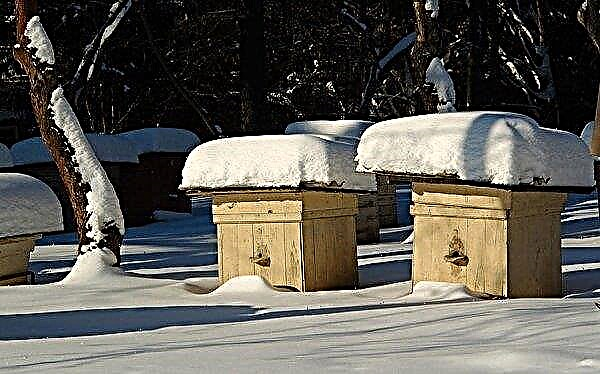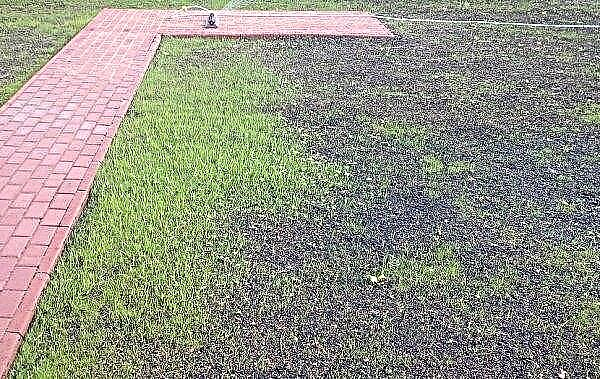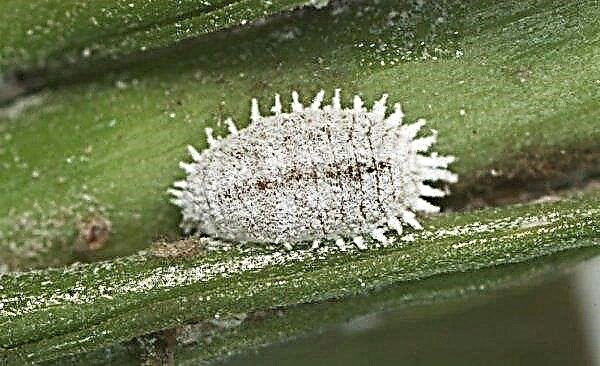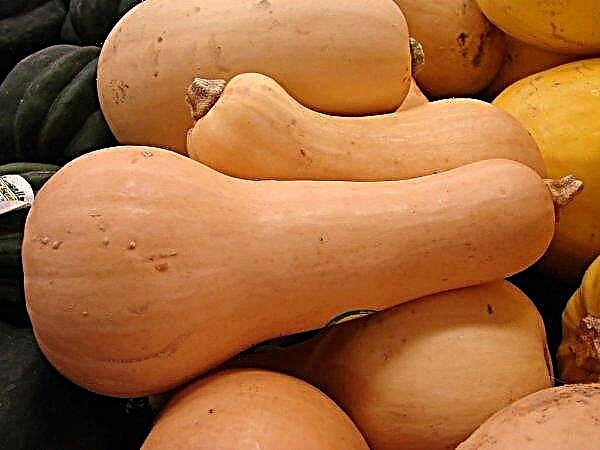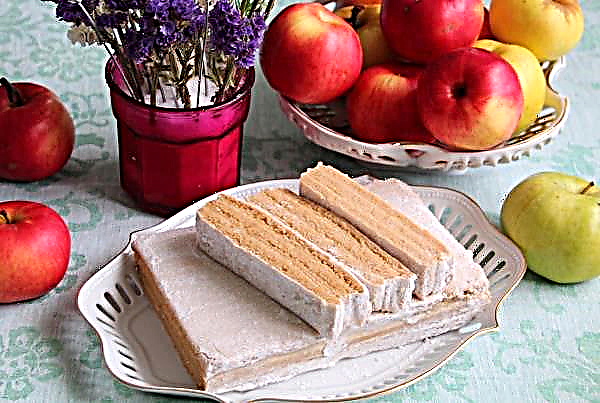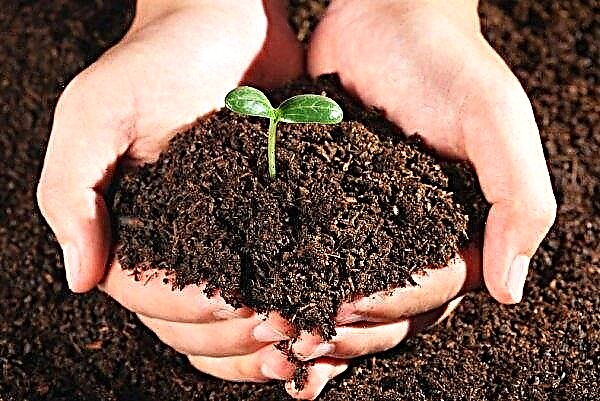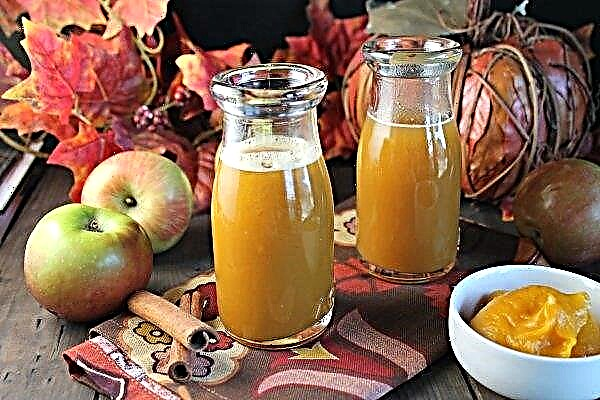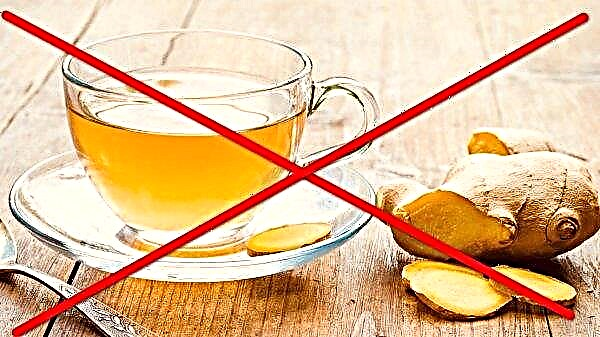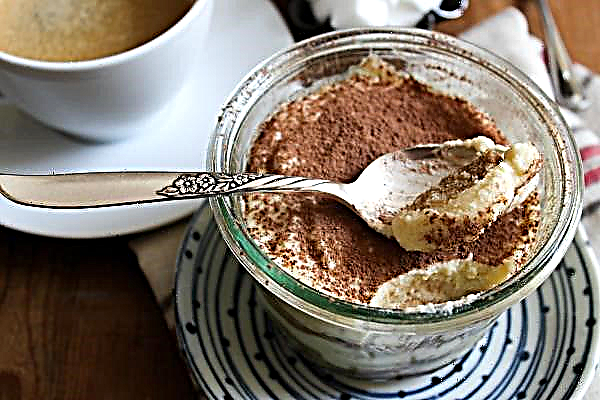If in your flower garden or garden you want to combine decoration with the benefits for the growth and development of your plants, then mulching with pine cones is the main stage in this process. You can find all the details in this article.
What is mulching
- Coating the surface of the soil with pine cones, that is, mulching, performs a number of basic functions:
- protection of the land cover from direct sunlight;
- moisture retention;
- decrease in the frequency of loosening of the soil.
Did you know? If your dog or cat has a habit of digging holes in the flower garden, it is necessary to scatter pine cones in these places. This will provide barbed protection from animals.
- Additionally, this process contributes to:
- enrichment of the soil with useful elements;
- weed control;
- protection against weathering, leaching of soil;
- protection of plant roots from freezing in winter and overheating in summer.
To protect the soil from drying out in summer in the country, the fruits of pine trees can be used as mulch. To remove the unnecessary shoots that made their way through them, it is enough to push them apart and remove weeds. When the soil is moist - the cone is compressed, and when it is warm and sunny - it opens and mulches the soil very well, protecting it from drying out. This type of mulching also has a great aesthetic effect. Especially in the autumn, when the plants in the flowerbed are not so lush.
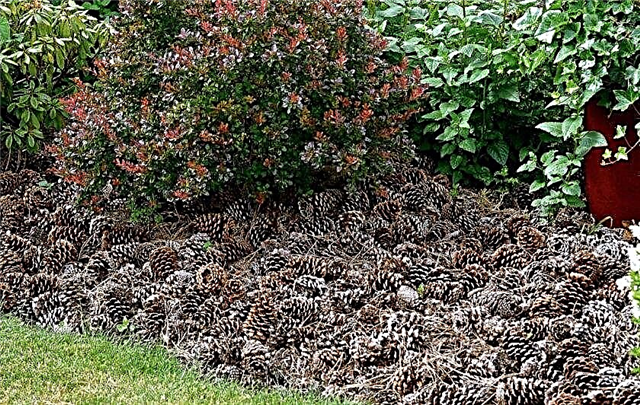
Pine cones like mulch
As a mulch, you can use a lot of organic and inorganic materials. But the beautiful pine cones are more suitable for mulching flower beds, rockeries, alpine hills, rosaries, tree trunks.
Important! So that the soil does not acidify when using pine needles, you must first chop the straw. And then mix everything together adding fruit plant litter. Also, to combat soil acidification, ash or dolomite flour can be used.
The excellent decorative component of this process should not neglect the characteristics of plants. For example, if for planting hydrangeas, conifers, rhododendrons cones can be used not only as mulch, but also as drainage, then for rosaries such a mulch is good only with a small layer of ash under them. Therefore, using this or that type of mulch, you need to know what acidity the soil prefers.

Advantages and disadvantages
Pine cone mulch refers to organic materials. It is enough in any coniferous forest. A little time in dry weather with a minimum of material costs, and you collect the necessary amount of this natural material. Its advantages on the one hand may be disadvantages on the other.
The advantage of pine cone mulch is that over time, decaying, it fertilizes the soil with useful elements, so it must be added and updated. These are its flaws. However, the process of decay is not so fast (up to 5 years for pine and up to 2 years for fir cones). The cones between the flakes are coated with resin, which prevents the penetration of moisture. This greatly increases the term of their use.
Important! This type of mulch less acidifies the soil compared with bark and coniferous litter.
On the other hand, this kind of mulch may attract various small insects and snailswho use it as food and habitat. And this is her fault. Also spruce litter is ineffective to use on inclined surfaces.
It should be remembered that dry cones and bark are fire hazardous materials. Do not mulch them with flower beds near a barbecue, barbecue facilities and other flammable objects.

What plants can be mulched
Resin cones contains biologically active substances - volatile. They actively repel pests of beneficial crops. Therefore, pine cone mulch can be actively used not only in flowerbeds and in the garden, but also in the garden when growing potatoes, carrots, turnips, onions, beets, cabbage, strawberries, blackberries, raspberries, etc. Medvedka and the wireworm will definitely not settle in your garden. But for growing seedlings, pine needles are not used as mulch.
Did you know? In the coniferous forest, due to phytoncides released, the air practically does not contain microflora, that is, it is sterile.
The process of making mulch
In the spring, the mulching process must be carried out after the appearance of all sprouts. The ground should be sufficiently warm and humid. Therefore, a few days before this, it is necessary to weed the bed and water it abundantly. The edges of the flowerbed must be enclosed with plastic or other curbs for garden paths.
As a result, the flower garden will have an attractively finished look. Natural material is scattered in a small layer and not tamped. Until autumn, mulch is in the flower garden. Then it is collected and dried in the sun. If you leave it for the winter in the flowerbed, then the process of destroying the cones will accelerate significantly.

Where and how to collect material
Material for mulching must be collected in the coniferous forest. This is a plus if it is not far. In order not to bring various harmful insects to the area along with the mulch from the forest, it is necessary to collect material in dry weather. If you bring ants with a mulch from the forest of ants, then in comparison with garden ants, they are more aggressive and can dig through the entire suburban area. For mulching, both cones and needles are used.
Did you know? From young cones of pine or larch, an extract jam is prepared. It has found effective use in traditional medicine for cough colds.
On beds for mulching do not use fresh needles, only rotted. Needles of pine and larch are suitable. Spruce needles, like cones, quickly decay, so it is not practical to use it.
 The material must be dry and not damaged by fungi and rot. You must bring gloves and bags to collect it.
The material must be dry and not damaged by fungi and rot. You must bring gloves and bags to collect it.
What cones cannot be used
When collecting mulch, make sure that rotten, damaged material does not get into your workpiece. Instances must be taken without seeds. Pay attention to this if you want to pick them directly from the tree. Usually by the beginning of May they already become empty. Spruce fruits for mulching are not suitable, because after winter they become half-rotten. But in small quantities they are used rather for decorative purposes.
Mistakes that are often made
We list the errors that may occur as a result of mulching:
- Mulching must be carried out with dry material on moist soil. If the soil is dry, it can be blown away by the wind. If wet, then the cones will plunge deeply into the soil and make its surface clogged, which will negatively affect the growth of plants.
- The mulch layer should not be large. 5-8 cm is enough. Otherwise, it can become a home for slugs.
- Cones used after mulching cannot be added to compost. The resin that is contained in them inhibits the process of decay.
- Such organic mulching is a source of only 1/4 of the norm of the elements necessary for plants. Missing 3/4 parts must be added additionally with fertilizer.

After thoroughly studying the intricacies of the mulching process with the help of pine cones, it can be argued that he found a positive review among professionals and amateurs as it promotes plant growth and significantly increases the attractiveness of flower beds. And numerous photos indicate that this is an excellent material for landscape design.

